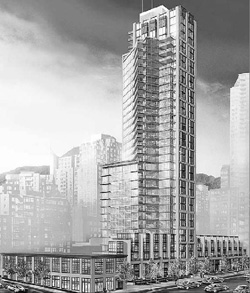‘Maximum mobility both in and out of the home’
Peter Wilson
Sun
|
A Vancouver-based Internet phone service, People Line, has cut the cord for those making their calls on the Web. Armed with a wireless phone from Zyxel, voice-over Internet protocol (VoIP) users can now take their phones with them and use them from unrestricted wireless hotspots in places such as cafes and coffee shops. And at home or work they can forget about a portable phone plugged into an adapter box connected to the Net. The WiFi phone simply connects to the home or office network wirelessly. That means users can simply tote their VoIP phone around the house or even carry it out on to the deck or the yard — as far as their WiFi network reaches. “I was using it at some cafes with wireless hotspots recently and you can use it just like if I had cellphone,” said Russ McDermott, marketing director at POPstar Communications Inc., which operates the People Line service. McDermott said People Line is hoping to market the phones largely to residential customers with an in-home wireless network or to small offices of four to 10 people which have wireless networks. “I think that more and more small business offices are being set up for wireless these days, so this would be a convenient way for people to have phones within the office,” said McDermott. “If they’re travelling, again they can take advantage of wireless hotspots to make their calls from there.” Currently, the phones don’t work at hotspots where a subscription to use the service is required, although McDermott is hoping he may be able to work out deals with those. McDermott said that one of the advantages of the WiFi phone is that people are not subject to the charges that can be run up on a cellphone. “In the home, you have the mobility of a cordless phone and you’ve actually got pretty good range,” said McDermott. “People have told me they have been able to walk out to the playground, so it will give you maximum mobility both in and out of the home, just like a cordless phone.” People Line sells the Zyxel Wi-Fi phone for $275. It’s basic service for a home line, call waiting, call display, caller-ID block and a free software phone goes for $9.95 a month. If you add call waiting, call display, voice-mail, call forwarding, call hold, call transfer and three-way calling, the price rises to $14.95 a month. Office users can get similar service, plus a separate fax number, and e-mail to fax and fax to e-mail, for $19.95. Adapter or phone rental adds another $5 a month to all the plans. Unlike most entrants in the Canadian VoIP marketplace, People Line does not base its marketing on long-distance bundles, relying largely on pay-as-you-go (at 2.5 cents a minute in North America). Instead it aims at customers who make the vast majority of their calls within local service areas. “What we’ve tried to do is differentiate ourselves as to services and features from our competitors,” said McDermott, whose company has been a pioneer in the Fax over IP market. “They won’t have all the messaging services that we have — for fax for example.” © The Vancouver Sun 2005 |





